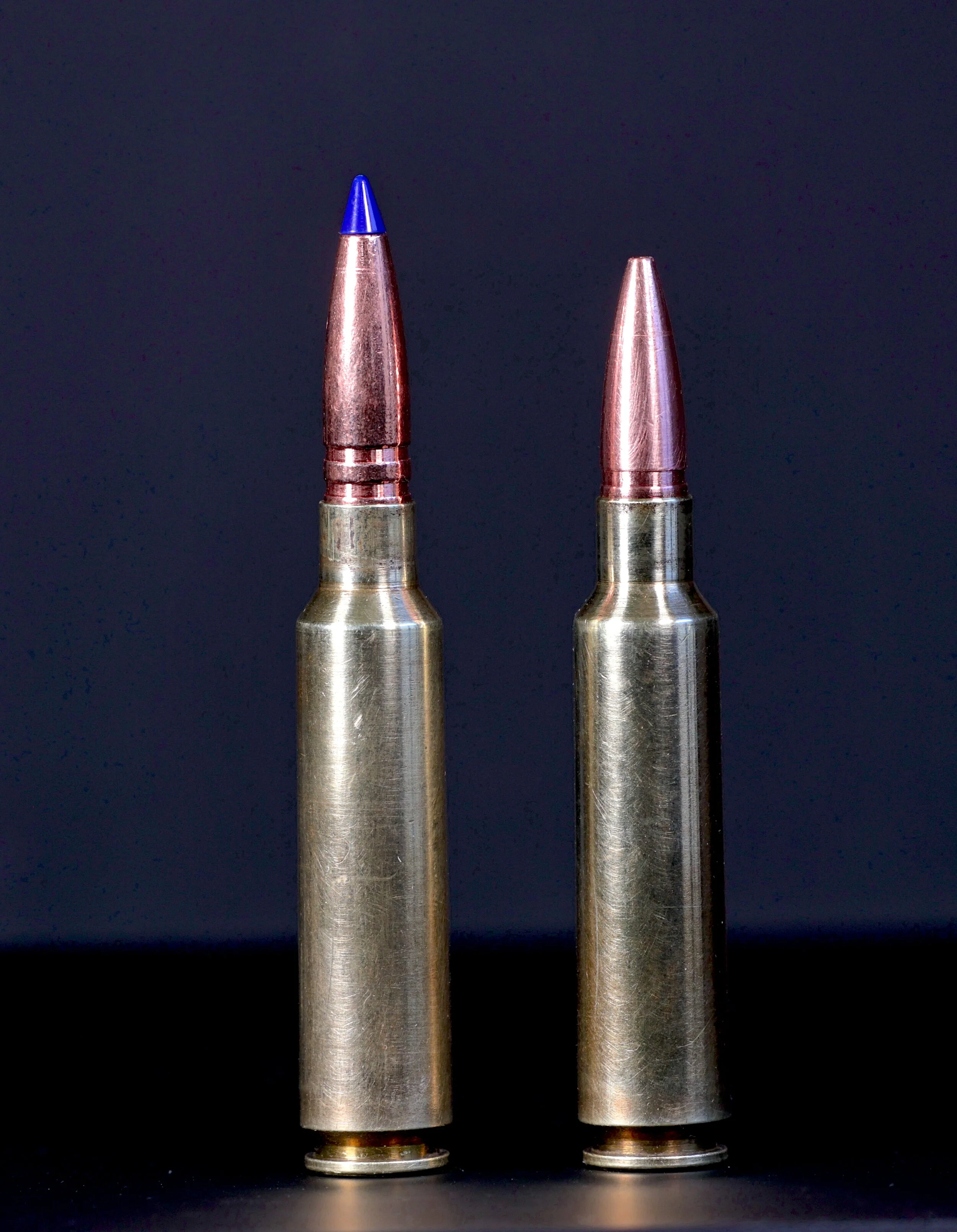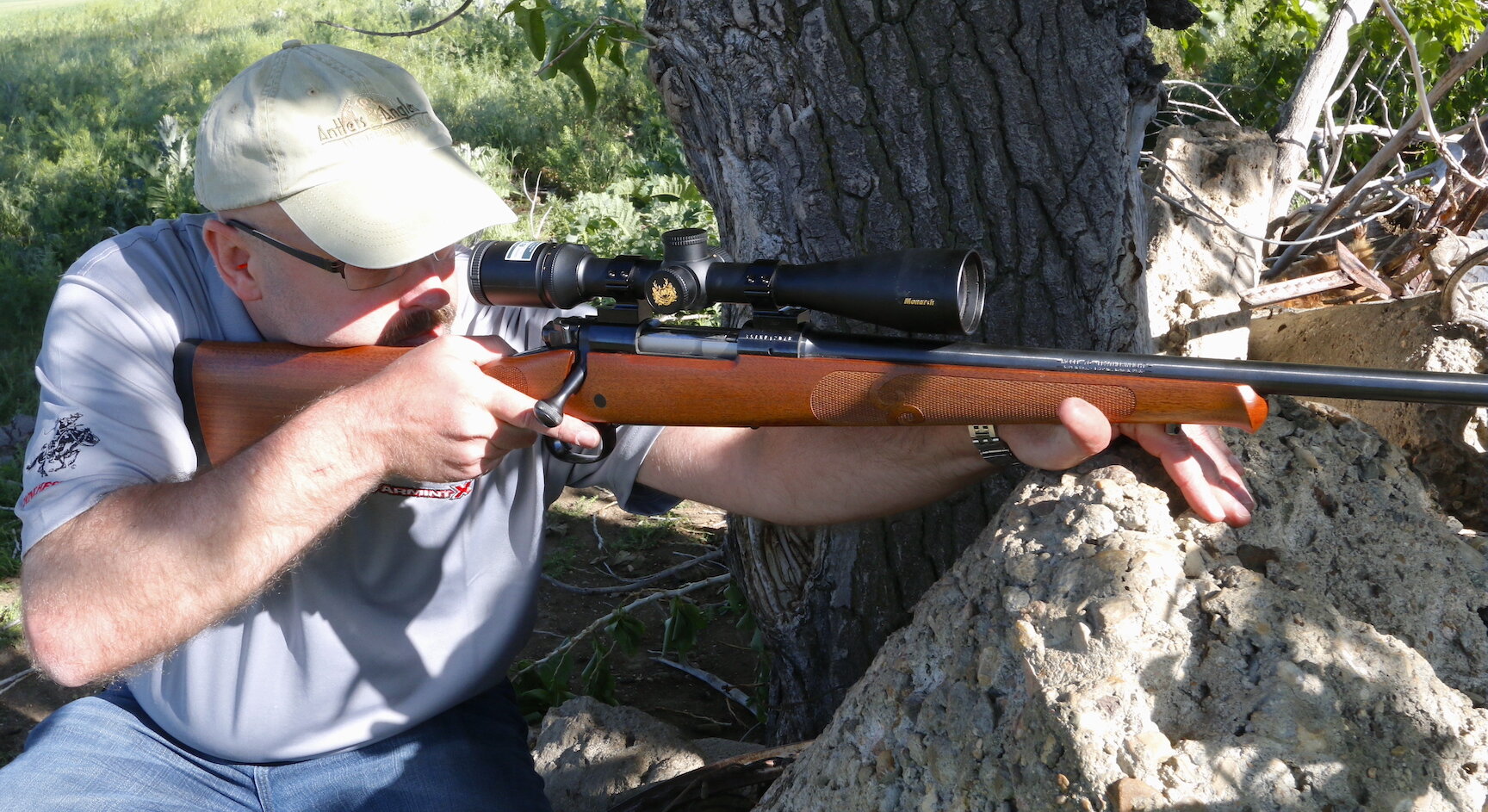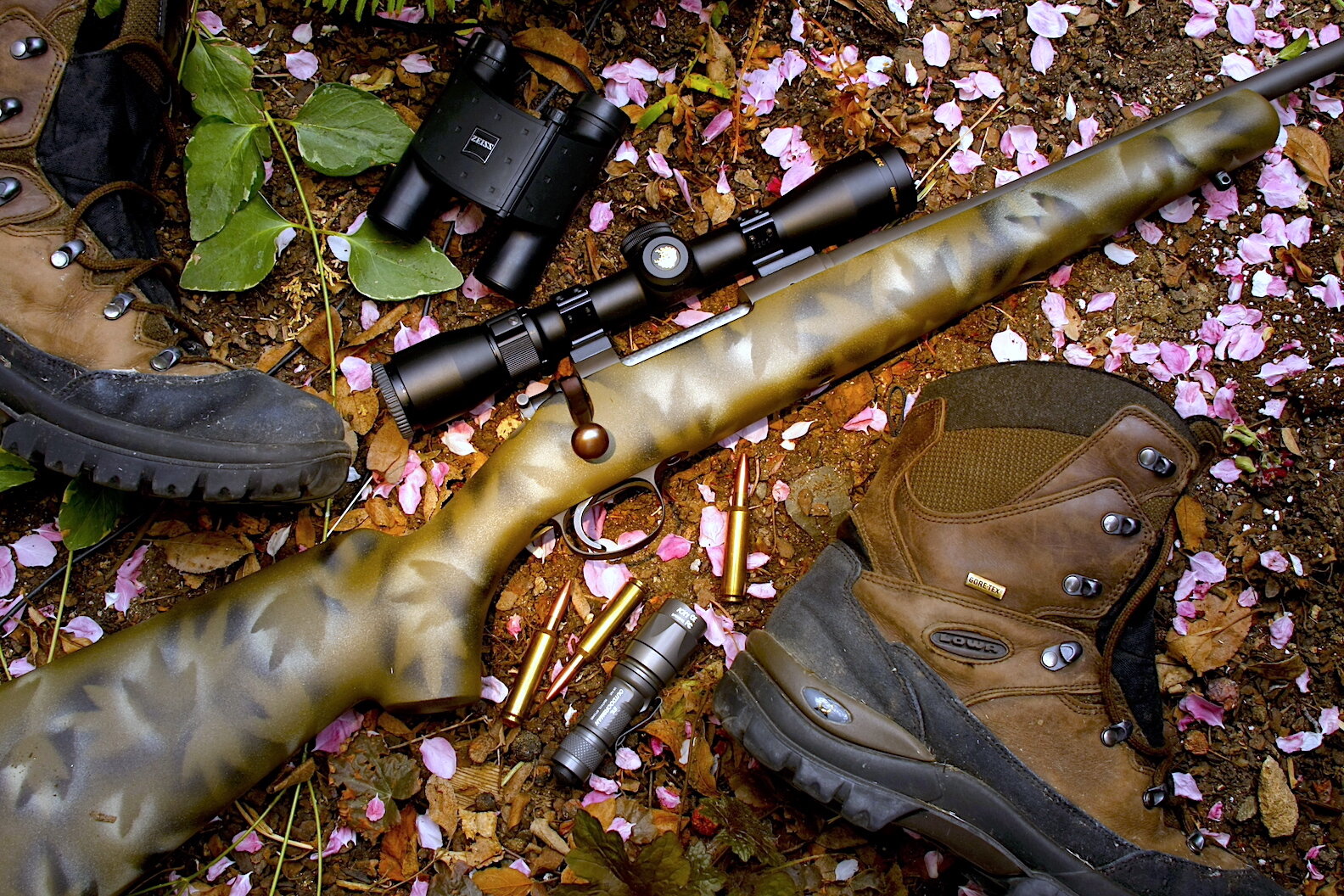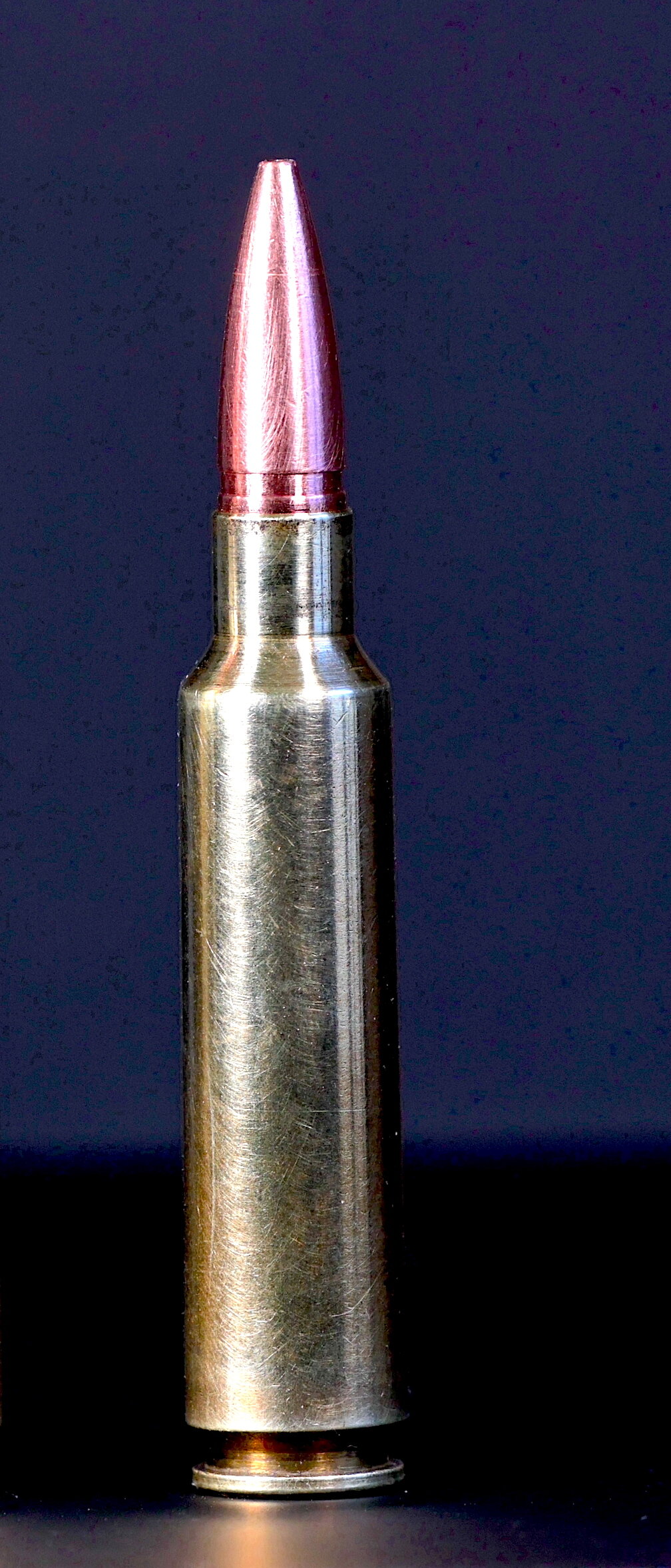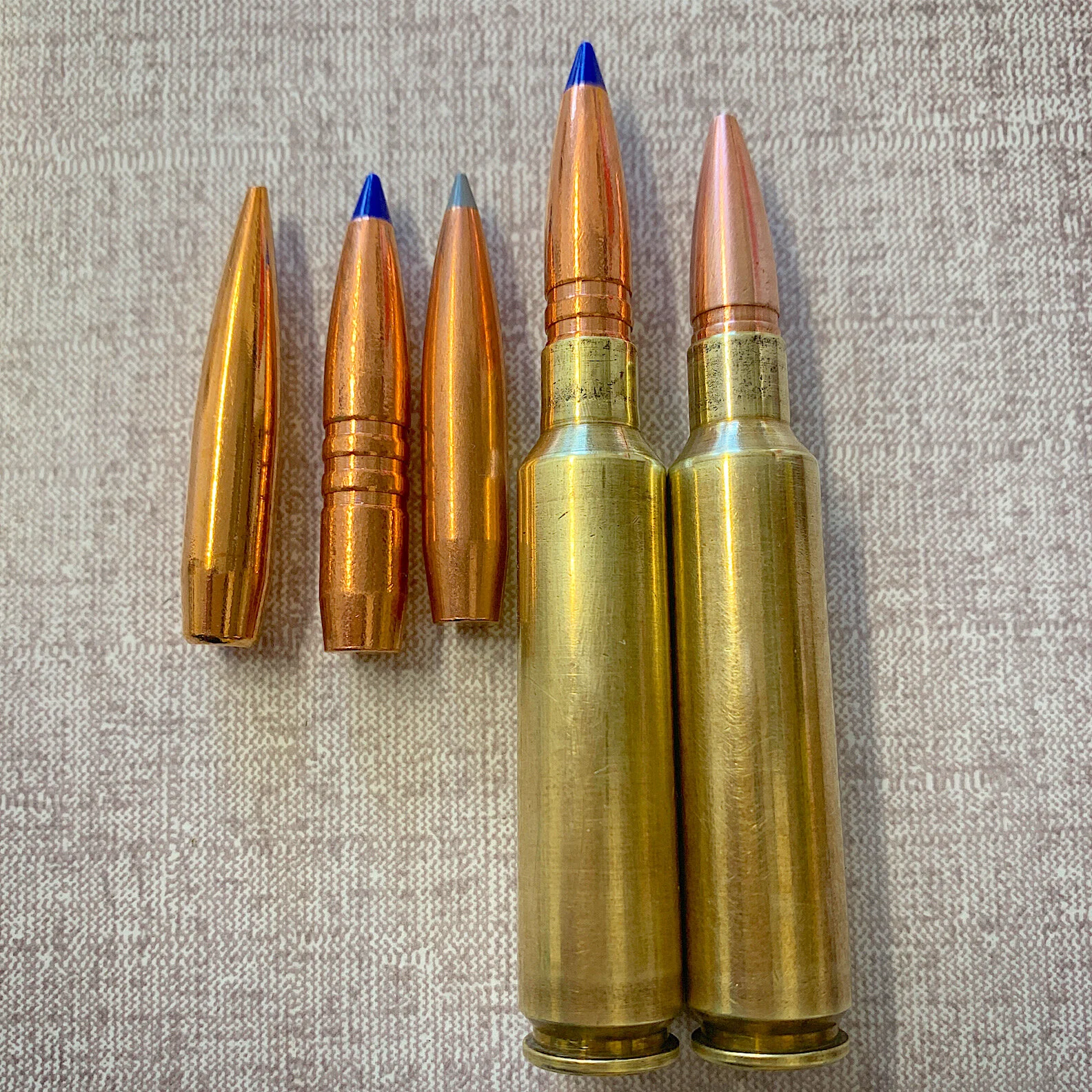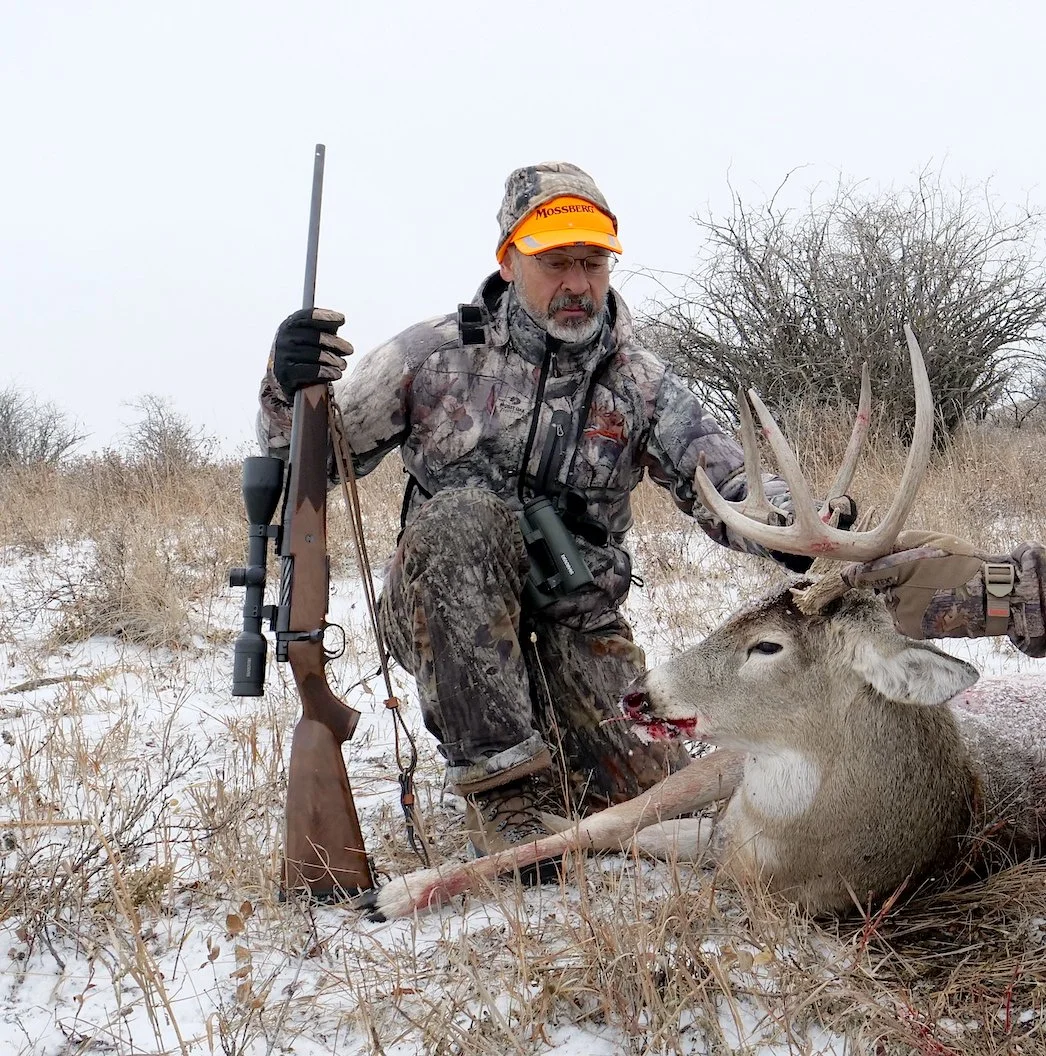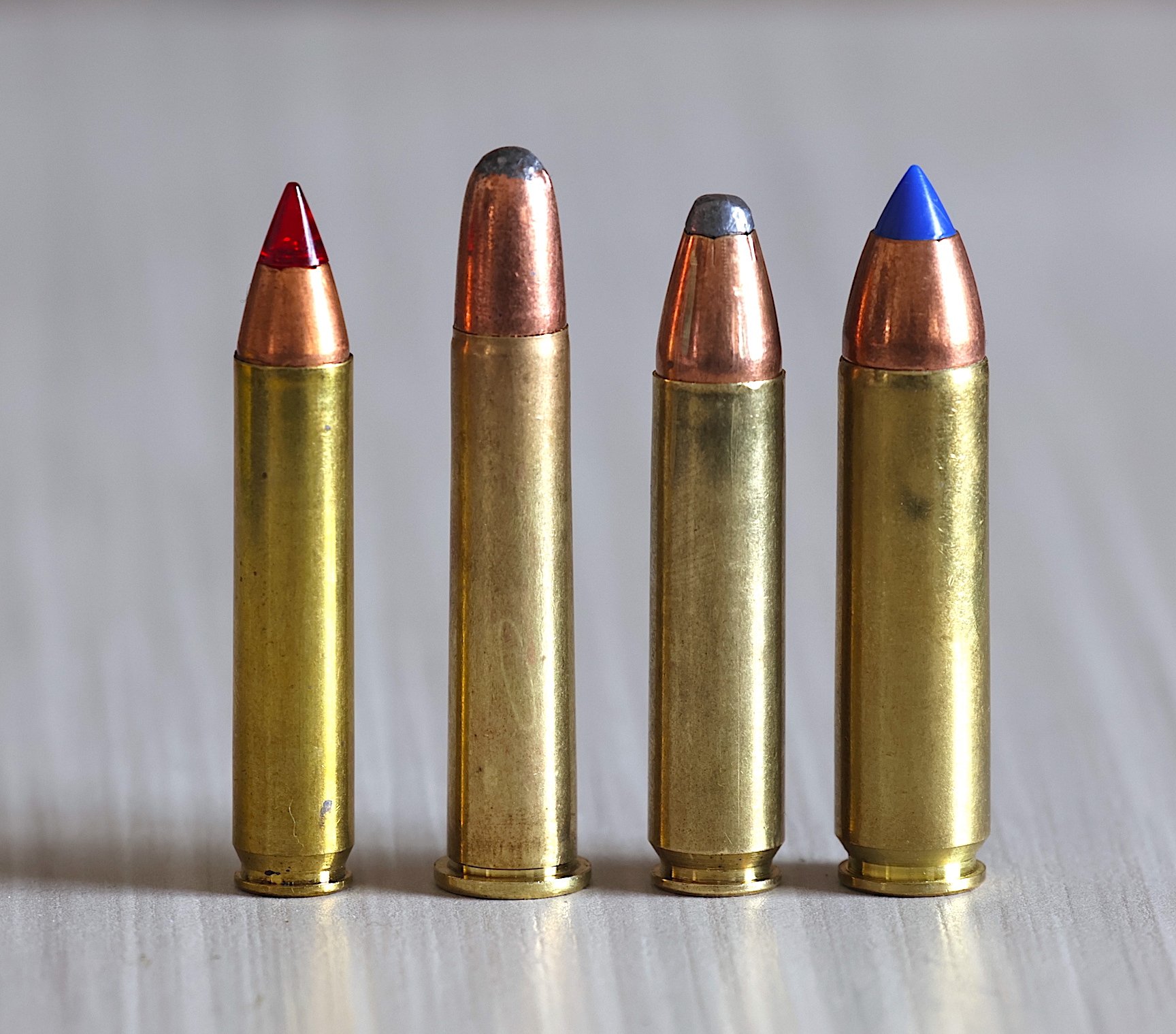The New 284 Winchester
Winchester made a mistake in 1963 when it created the 284 Winchester cartridge. That might be why it has taken nearly 60 years for the shooting public to discover the outstanding ballistic performance of this overlooked round.
Winchester’s mistake wasn’t the cartridge itself. It was where they put it. In the Model 88 lever-action and Model 100 autoloader. Both were short actions designed for quick handling and cycling, something American deer hunters had been enjoying with their 30-30s and 32 Winchester Specials for decades. And that might have been the 284’s first hurdle.
Winchester’s M88 lever-action in 284 Winchester gave 270 Winchester performance in a quick-handling platform but without the long-range accuracy of a high quality bolt-action. The M88 was chambered in 243, 284, 308 and 358 Win. and manufactured from 1955 until 1973.
The “new” 284 Winchester on left is handloaded to exceed its SAAMI overall length for a custom fit in a long-throat barrel. The “old” 284 Winchester on the right is loaded to COAL of 2.8 inches. Both are remarkably modern, flat-shooting 7mms.
Competing against the beloved and ubiquitous lever-action Marlins and Winchesters in the mid-20th century was an uphill battle. Sure, the 284 Winchester provided vastly superior ballistics. It’s spire point 150-grain bullet at an advertised 2,860 fps did just about what Winchester said it would — match 270 Winchester ballistics in a short-action. The problem was most hunters who wanted 270 Winchester performance already had it in their M70 bolt-actions plus many other brands and actions styles such as Remington’s pump. Quick-handling lever and auto actions were seen as useful in woods hunting where 270 Winchester ballistics were not.
This might not have been the kiss of death for the 284 if Winchester had also chambered it in their revered M70 bolt-action. They did not. And I can understand their reasoning. At the time the M70 was not built with a true short-action receiver, so there was no advantage in running a short-action 284 Win. cartridge in an action that better fit the 270 Winchester that the 284 was designed to match. (Although there is an advantage in chambering a long action in 284 Win. today. You can load extra long, high B.C. bullets, seat them longer than COAL, and enjoy the benefits of high B.C. efficiency.)
Today’s M70 Featherweight is built on a short-action. Get one like this 243 Win., rebarrel to 284 Win., and you’re styling with our 58-year-old, cutting-edge 7mm.
Additional strikes against the cartridge came from some gun writers who postulated that the cartridge overall length of 2.8-inches (same as the 308 Win.) meant that long, 175-grain bullets would seat so deeply into powder space that velocity would suffer excessively. That, we shall soon see, wasn’t an accurate assessment.
Another hurdle was the 7mm Remington Magnum. This belted magnum had been introduced in the then-new M700 rifle just the year before. Both rifle and cartridge were taking the hunting world by storm. The 7 mag was fast, flat, and capable of driving 175-grain bullets nearly 2,900 fps. In those days the belted case was tantamount to a gold medal, bestowing on any cartridge the aura of supreme magnum power. The 7mm Rem. Mag. was so spectacular that it even crushed sales of Remington’s own 280 Remington cartridge, which had been introduced in 1957 to compete against Winchester’s 270. (In an effort to revive its sagging 280, Remington renamed it the 280 Express in 1979. That merely confused people.)
At any rate, the 284 Winchester had plenty of competition and no ideal “home.” It was trapped in limbo. And there it remained until the mid-1980s when an efficiency-minded gunsmith from West Virginia mated it to the perfect rifle, the Ultra Light Arms Model 20.
This is the original M20 Ultra Light Arms rifle in 284 Winchester with a new paint job. This rifle has worn Nikon, Leupold, and Swarovski scopes over the years, always in the original Talley ultralight rings. It still shoots MOA or slightly better.
Melvin Forbes saw the short-action 284 Win. as the ideal cartridge for his sub-5-pound ultralight rifle. By using the latest, high strength steels, he was able to shrink a short-action to weigh just 20-ounces. Combine that with a fairly light, 22-inch barrel, screw the works onto a stiff, hand-laid, fiberglass stock of Mel’s design and you were free to roam the high country without a 10-pound albatross slung over your shoulder. Mel’s little rifles defied conventional wisdom and shot sub-MOA, too. That was not something light rifles were supposed to do. Nor was the 284 Winchester supposed to spit 140-grain bullets 3,000 fps. But it did. Mel’s rifles weren’t exactly cheap for the time, but they were a bargain for anyone who’d suffered under the gravitational load of a 50-pound backpack in the Rockies or Alaska Range. Shaving 4 pounds of rifle weight enabled hunters to go farther or pack another 4 pounds of freeze dried food. It all added up to more time and success in the backcountry. And the 284 Winchester anchored the whole program.
All dressed up with lots of places to go. This was my idea of cutting edge desert wear in 1989 when Webby Parton led me into the Arizona mountains on a my first Coues whitetail hunt. The ULA 284 Win. dropped a little buck (look closely and you’ll see its 4x4 rack on the pack) with one shot from 411 yards, as I recall. That Camp Trails pack was surprisingly effective at handling big loads even though it wasn’t camouflaged.
I know all this because I was one of the gravitationally challenged backpack hunters of that era. The first year I hunted with a 284 Winchester Model 20 I fired 11 shots to bag 10 animals from 16 yards to 411 yards. The extra shot was to anchor a mountain goat so it wouldn’t kick off a ledge. Not surprisingly, I fell in love with the 284 Winchester.
While this little 7mm has the same COAL as the 308 Winchester (2.8-inches) it holds about 9 grains more water because its body diameter is 0.500” to the 308’s .470”. While the 270 Win. will burn about 58 grains of H4831 powder to push a 140-grain bullet 3,000 fps, the 284 Win. will burn 58.5 grains to reach the same speed, according to the Nosler Reloading Guide 8.
The rebate on the rim of the 284 Winchester is so minimal that it’s difficult to see, but the 0.025” larger diameter body provides sufficient space to compensate for the short-action length of the case. This makes the 284 Winchester the ballistic equal of the 280 Remington and 270 Winchester. Unlike the 270 Win., however, it can handle bullets much heavier and sleeker than 150-grains.
Really, the 284 Win. was our first short-fat cartridge. It was also the first in the U.S. with a rebated rim. And one of the first with a 35-degree shoulder. If Winchester had waited until today to release this cartridge, it would be considered cutting edge. In fact, Weatherby recently lengthened the 284 Win. to make its rebated rim 6.5 RPM cartridge.
Oddly, .264” bullets have given the 284 win case its biggest spotlight. Wildcatters have been necking the 284 Win. up and down for decades. The .257 version is fairly popular. Some 6mm versions really scream, but the 6.5mm was so good that a lot of long range target shooters started competing with it. Norma in Sweden took note and, with Winchester sleeping on the job, so to speak, Norma stole the show by commercializing this .264 as the 6.5-284 Norma, not Winchester.
The 6.5-284 Norma became so popular that long range competition shooters wondered what would happen if they necked it up to 7mm. Yup, they “re-created” the 284 Winchester. One Charles Ballard used one to set a National F-Class 1000-yard record by pushing high B.C., 180-grain Berger bullets to 2,900 fps! Now, remember what was said about a long, 175-grain bullet taking up too much powder space in the 284? How was Ballard able to get an even longer, heavier 180-grain bullet to 2,900 fps? For one thing he used a 32-inch barrel. For another, he throated the chamber specifically for 180-grain Bergers seated long in a long, single-shot action. Without the COAL restrictions of a short-action magazine, he could seat his long bullets well out of the powder space, much as one can do with the round chambered in a 30-06-length action.
Depending on a rifle’s magazine length, action length, and throat length, you can seat heavy, long, high B.C. bullets beyond COAL (cartridge on right) for a custom fit. My ULA M20 easily handles 2.995” seating. A standard (30-06) length action can take even longer COAL as shown by the cartridge on right. It’s 3.210”, approaching the 3.34” COAL of the 30-06. Bullet L. to R. are Berger 180-gr. Target Hybrid, Barnes 168-gr. LRX, and Nosler ABLR 168-gr.
But you don’t have to seat long bullets far beyond the 284’s 2.8” COAL to get good performance. If Karamojo Bell was dropping buffalo and elephant with a 7mm Mauser pushing 173-grain bullets 2,300 fps, the 284 Win. ought to be sufficient for elk and moose with a 175-grain 300 fps faster. Several handloading manuals I’ve consulted show the 284 pushing 175-gr. bullets as fast as or only 100 fps slower than the long-action 280 Rem. and 7x64 Brenneke. A 175-grain bullet at 2,650 fps isn’t going to bounce off anything. And it will match or beat the trajectory of a 6.5 Creedmoor spitting 142-grain bullets.
The rising popularity of the 284 has inspired Lapua to build brass cases for it. So now we have brass as well as loaded ammo from Winchester. Nosler loads 284 Win. from time to time. Winchester’s only load for some time now has been a 150-grain Power Point, which is okay but hardly a sleek, high B.C. modern design. Anyone serious about the 284 Win. should plan to handload it. This way you can not only tune your loads for maximum performance in your rifle, but choose the perfect bullets for your applications.
During my most active hunting years with the 284 I shot 139-grain Hornady Interlocks and 140-gr. Nosler Partitions. Most recently I started working with 120-grain Barnes TSX. I’ll next be trying Barnes 145-gr. LRX, perhaps 168-gr. LRX for elk and moose.
I believe it was 1989 when I found this California bighorn ram in the desert of SW Idaho. The ULA 284 Win. sent a 139-grain Hornady BTSP Interlock 200 yards to intercept the running ram. It was the leader of a band of 11, but the second in command had horns about an inch longer. That one would not separate from the band for a clean shot.
There are certainly other 7mms that meet or beat 284 Win. performance, but none optimize it in a light to ultralight short-action platform perfect for hunting. If you’re looking for a trim, light, handy, deadly accurate rifle with which to hunt the world’s mountains and wilderness, consider the Model 20 Ultra Light (now known as the New Ultra Light Arms) in 284 Winchester. Or build a custom of your own. You won’t be disappointed.
Over the years the ULA 284 Win. has proven deadly on coyotes, too. This pair checked out my calls, then checked out permanently when 140-grain Nosler Partitions caught them inside of 150 yards or so. This would have been in the early 1990s.
BUY NOW
# # #



